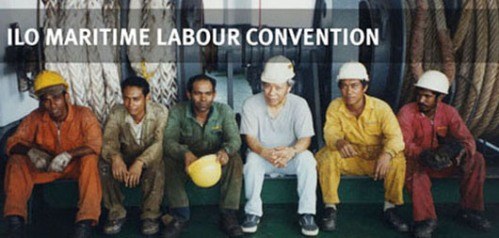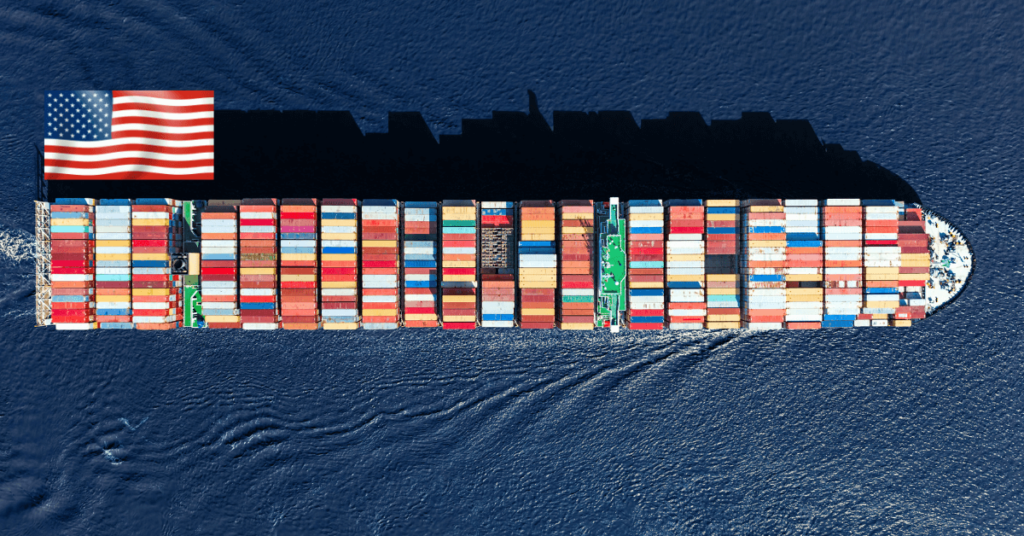What are Intermodal and Multimodal Transport Systems?
Global trade necessitates the movement of goods from one corner of the world to another. An estimated US$ 48,018 billion worth of trade merchandise changed hands in 2023.
The modern shipping containers used to transport goods are moved by road, rail, sea transport, or a combination of any of these modes of transport.

The mode of transport used to move containers may depend upon the availability of transport slots, connectivity between trading centres, cost of transport, time factor, or a combination of these factors. Businesses generally go for the quickest and safest transport modes offered at the best price.
Generally, sea transport is the most opted one, especially for bulk movements.
Intermodal Transport
Transportation of goods by intermodal containers using more than one mode of transport is called Intermodal transport. Intermodal containers are large shipping containers available in standard sizes and specifications. In this method of transporting goods, each mode operates under a different contract with the respective service provider.
In intermodal transport, the sender chooses the carrier offering the best rates and services. Each party must agree upon the various transport arrangements separately.

As such, the sender of the goods will have to deal with a different party and enter into separate contracts for each mode of transport. In other words, there will be separate transport bills for each leg of the journey. By selecting different service providers, each with their knowledge and expertise, for each leg of the journey, goods can be transported more efficiently and economically.
Expedited Services
Suppose the sender of goods wants his cargo to reach the receiver or consignee quickly. In that case, they may opt for expedited services that are generally more expensive than the normal, slower service. Expedited services are usually dedicated services offered by the cargo operator.
Consolidation or Groupage
Consolidation or groupage that drastically cuts costs may be negotiated with the transporters. In the case of cargo that is not enough to fill a full container (Less than Container Load or LCL), groupage allows sending such cargo in a ‘pooled container’ that has cargo from other senders as well, going to the same destination or destinations en route.
Carbon Footprint
These days, all logistics stakeholders are equally responsible for reducing environmental pollution and damage. As such, they have to be wary when selecting the operator. Intermodal transport allows them to choose from environmentally friendly carriers that help reduce their carbon footprint. Here, the carbon footprint is the measure of greenhouse gases, such as carbon dioxide, methane, nitrous oxide, etc., that are released during transport.
Intermodal transportation is considered more flexible for companies that require flexibility in scheduling transport.
On the flip side, when many parties are involved, it may result in delayed lead times and decreased efficiencies. Each stage of the journey has to be coordinated with the next to ensure a seamless flow, and this, in most cases, has to be done by the sender or shipper of goods.
It may be more challenging to manage such contracts as they usually involve different parties in different parts of the world, especially when it comes to the international movement of goods. Each party will be responsible for the goods only for their specific leg of journey. So, insurance arrangements have to be well planned by the sender.
Without the synergies of all parties acting in tandem, there could be disruptions in the transport chain.
Example for Intermodal Transportation
A consignment of industrial pumps is waiting to be moved from Coimbatore, Tamil Nadu, India, to the United Arab Emirates (UAE). A truck brings the empty shipping container to pick up the cargo from the manufacturer’s premises in Coimbatore.
After loading, the truck takes the container to the railway yard, where it is put on a goods train to Cochin, Kerala. At Cochin port, this is loaded on a container carrier to Jebel Ali, United Arab Emirates.
After the container is offloaded at Jebel Ali, a truck will haul it to the consignee’s final address in the UAE, where the shipment of industrial pumps will be unloaded.
As we can see here, each leg of the journey will be covered by a different contract and transport bill, which the sender has to work out separately with each transport service provider.
Multimodal Transport
Multimodal transport is very similar to intermodal transport in the fact that it uses more than one mode of transport. But the similarity ends right there.
In multimodal transport, goods are transported under a single transportation bill or bill of lading. This instrument is also referred to as the Combined Transport Bill of Lading, Multimodal Bill of Lading, etc. In logistics parlance, multimodal transport is commonly called ‘door-to-door’ delivery under the transport operator’s responsibility.

The operator is responsible for the goods throughout the journey. In multimodal transport, the combined transport bill of lading that is issued by the transport operator or organisation handling the cargo travels with the cargo from the point of loading to the point of discharge.
Convenience
The transport operator usually handles loading, unloading, and paperwork at each point of the journey. This means less headache for the shipper and generally offers a seamless flow of their cargo from point A to point Z. The shipper, or in some cases, the receiver, has a single point of contact at the multimodal operator’s office, unlike having to deal with several ones as in intermodal shipping.
Multimodal operators, with their vast networks, can handle shipments better than individual operators whose responsibilities are only for a specific leg of the journey. They might also be less expensive in certain cases.

Multimodal operators are usually more efficient when dealing with customs officials and other government agencies. Business organisations often find it convenient to develop long-term, sustainable partnerships with multimodal operators for transporting cargo. Such operators generally have the technical know-how and expertise, such as the latest software to track or monitor cargo, connections with relevant external agencies, etc. Besides, it is easy for the sender and the cargo operator to deal with just one party.
In the example given above [under intermodal transport], let us say a multimodal transport operator was responsible for moving the cargo of industrial pumps from Coimbatore, India, to the UAE. In such a case, the multimodal transport operator would make all arrangements from their end to move the consignment from Coimbatore to the UAE, which is their responsibility.
It would go under a single Bill of Lading. It may or may not follow the same routing. Or it may resort to different combinations of transport modes. Whatever the case, the sender will have a single point of contact to coordinate.
Key Takeaways
Intermodal and multimodal transport systems use road, rail, or sea transport or a combination of these modes, and both require efficient coordination for a seamless transport chain.
Intermodal Transport
- It involves separate contracts with different service providers and, hence, more points of contact to deal with.
- The option to choose appropriate carriers and to reduce costs is with the sender in intermodal transport.
- Disruption of one service may upset the entire chain of transport.
Multimodal Transport
- Single point of contact for the sender.
- In multimodal transport, the sender gets a single bill of lading from the point of origin to the point of final discharge.
- Multimodal transport offers the safety of the service provider taking complete responsibility for the shipment from the point of origin to the point of final discharge.
- Multimodal transport operators are in a better position to offer alternatives in case of service disruption.
You might also like to read-
- Who is a “Multimodal Transport Operator”?
- 8 Major Types of Cargo Transported Through the Shipping Industry
- Types Of Water Transport
- What is Switch Bill of Lading
- Bill Of Lading in Shipping: Importance, Purpose, And Types

About Author
Hari Menon is a Freelance writer with close to 20 years of professional experience in Logistics, Warehousing, Supply chain, and Contracts administration. An avid fitness freak, and bibliophile, he loves travelling too.
Disclaimer :
The information contained in this website is for general information purposes only. While we endeavour to keep the information up to date and correct, we make no representations or warranties of any kind, express or implied, about the completeness, accuracy, reliability, suitability or availability with respect to the website or the information, products, services, or related graphics contained on the website for any purpose. Any reliance you place on such information is therefore strictly at your own risk.
In no event will we be liable for any loss or damage including without limitation, indirect or consequential loss or damage, or any loss or damage whatsoever arising from loss of data or profits arising out of, or in connection with, the use of this website.
Do you have info to share with us ? Suggest a correction
Disclaimer :
The information contained in this website is for general information purposes only. While we endeavour to keep the information up to date and correct, we make no representations or warranties of any kind, express or implied, about the completeness, accuracy, reliability, suitability or availability with respect to the website or the information, products, services, or related graphics contained on the website for any purpose. Any reliance you place on such information is therefore strictly at your own risk.
Related Articles
Daily Maritime News, Straight To Your Inbox
Sign Up To Get Daily Newsletters
Join over 60k+ people who read our daily newsletters
By subscribing, you agree to our Privacy Policy and may receive occasional deal communications; you can unsubscribe anytime.





BE THE FIRST TO COMMENT